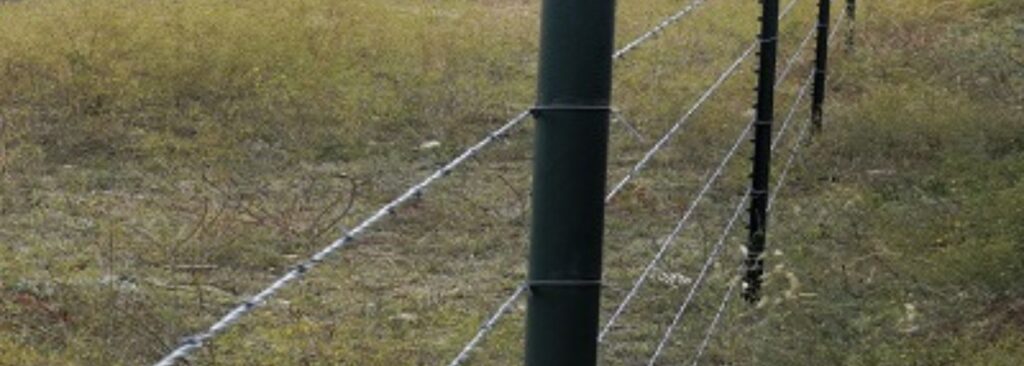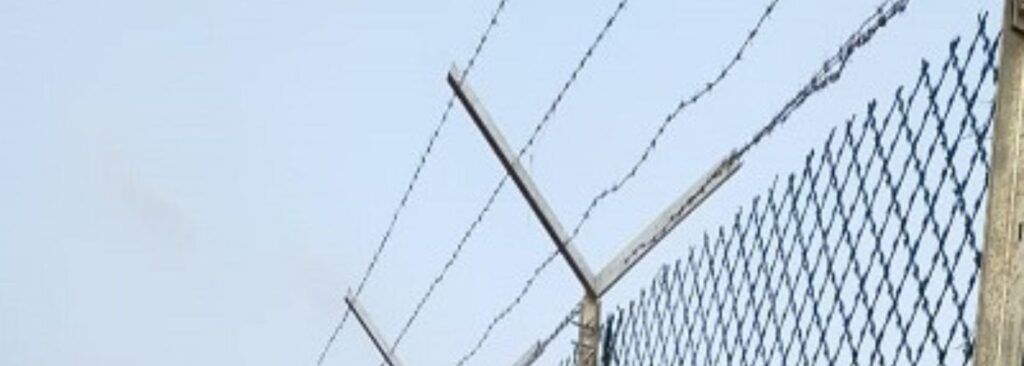

Barbed Wire Fence: Protecting Boundaries and Beyond #
Introduction In the realm of fencing solutions, few structures hold the same level of historical significance and practicality as the barbed wire fence. A barbed wire fence is an iconic deterrent that has served myriad purposes over the years, from marking territorial boundaries to safeguarding livestock and property. This article delves into the world of barbed wire fences, exploring their components, installation, advantages, disadvantages, and the diverse applications they find in various industries. Components of a Barbed Wire Fence The foundation of any sturdy barbed wire fence lies in its components. Understanding these elements is vital to ensure a reliable and effective fencing solution. First and foremost is the barbed wire itself. Typically made of steel, barbed wire comes in various designs, each with specific applications. The fence posts are equally important, serving as the supporting structure for the barbed wire. These posts can be constructed from wood, metal, or concrete, depending on the desired durability and budget. Additionally, tension wire is often incorporated to reinforce the fence, providing added stability and strength. Choosing the Right Type of Barbed Wire With a myriad of barbed wire options available, selecting the most suitable type for your specific needs can be perplexing. Factors like the level of security required, the type of terrain, and the presence of wildlife must be considered. A variety of barbed wire designs, including single strand, double strand, and concertina wire, cater to diverse fencing requirements, ranging from agricultural purposes to high-security installations. Preparing for Fence Installation Before embarking on the fence installation journey, thorough preparation is essential. Assessing the perimeter and terrain helps determine the amount of materials needed and aids in planning the layout effectively. Additionally, obtaining necessary permits and permissions from relevant authorities is vital to avoid legal complications down the road. Installing the Barbed Wire Fence The process of installing a barbed wire fence demands meticulous attention to detail and adherence to safety guidelines. This section provides a step-by-step guide, covering aspects such as post placement, wire tensioning, and proper attachment of barbed wire. Safety precautions, including the use of personal protective equipment (PPE), are emphasized to ensure injury-free installation. Maintaining a Barbed Wire Fence Regular maintenance is the key to maximizing the lifespan and effectiveness of a barbed wire fence. Inspecting the fence periodically for damage or wear is crucial to catch and address issues early on. This section offers tips on repair techniques and weatherproofing methods to fortify the fence against environmental factors and maintain its functionality in the long run. Advantages of Barbed Wire Fences The popularity of barbed wire fences can be attributed to several significant advantages. Firstly, their presence acts as a powerful deterrent to potential intruders, safeguarding property and deterring trespassers. Additionally, barbed wire fences are cost-effective and relatively simple to install, making them an attractive option for budget-conscious individuals. Moreover, their versatility enables their use in various environments and industries, from rural farmlands to high-security zones. Disadvantages of Barbed Wire Fences As with any fencing solution, barbed wire fences come with certain drawbacks that must be considered. Safety concerns arise due to the sharp barbs, posing a risk to humans and animals alike. This section addresses ways to mitigate these risks and minimize potential harm. Furthermore, some may argue that barbed wire fences can be aesthetically displeasing and negatively impact public perception, especially in urban and residential areas. Alternatives to Barbed Wire Fences While barbed wire fences offer numerous benefits, they might not be the ideal solution for every situation. This section explores alternative fencing options, such as chain-link fences, electric fences, and natural barriers like hedges or living fences. By comparing the pros and cons of these alternatives, readers can make informed decisions based on their specific needs and preferences. Legal Considerations Before installing a barbed wire fence, it is essential to be aware of local regulations and restrictions. Some areas may have specific rules governing the height and design of fences, especially those with barbed wire. Additionally, this section delves into the legal aspects of owning a fence, including liability concerns and the responsibilities of fence owners. Barbed Wire Fences in Different Industries The application of barbed wire fences extends across various industries, each benefiting from the security and protection they provide. In agricultural settings, barbed wire fences are instrumental in enclosing livestock and protecting crops from wildlife. Industries like construction and manufacturing utilize barbed wire fences to secure equipment and deter trespassers. The diverse uses of barbed wire in different sectors highlight its versatility and practicality. Innovations in Barbed Wire Fencing Advancements in technology have not overlooked the world of fencing, and barbed wire solutions have seen their fair share of innovations. This section explores modern developments, including stronger and more durable materials, as well as smart fencing solutions that integrate technology for enhanced security and monitoring capabilities. Environmental Impact While barbed wire fences offer numerous benefits, they are not without potential environmental consequences. The presence of fences can disrupt wildlife habitats and migration patterns, affecting local ecosystems. This section emphasizes the importance of sustainable fencing practices, such as wildlife-friendly fence designs and seasonal fence adjustments, to minimize the impact on the environment. Famous Barbed Wire Fences Throughout history, barbed wire fences have played pivotal roles in various events and locations. This section explores famous examples, such as the use of barbed wire during wars, historical landmarks, and cultural references in literature and art. Conclusion In conclusion, the barbed wire fence remains a timeless and effective fencing solution that continues to serve numerous purposes across industries and applications. Its iconic design and practical advantages have secured its place in history, making it an indispensable tool for securing boundaries and protecting what matters most. As technology and sustainability continue to shape the world of fencing, the future of barbed wire fences promises even greater innovation and adaptability.FAQs
- Are barbed wire fences safe for pets and wildlife?
- While barbed wire fences can pose risks to pets and wildlife, there are measures to make them safer. Using smooth wire on the bottom strand and spacing the barbs widely can reduce potential harm.
- Can I install a barbed wire fence on my property without legal issues?
- Before installation, check local regulations and consult with neighbors to ensure compliance and prevent legal disputes.
- Can barbed wire fences be electrified?
- Yes, barbed wire fences can be electrified to provide an additional layer of security and deterrence.
- How long does a barbed wire fence typically last?
- With proper maintenance and upkeep, a well-constructed barbed wire fence can last up to 20 years or more.
- Can I install a barbed wire fence myself, or should I hire a professional?
- While it is possible to install a barbed wire fence DIY, hiring a professional ensures proper installation and minimizes potential risks.




